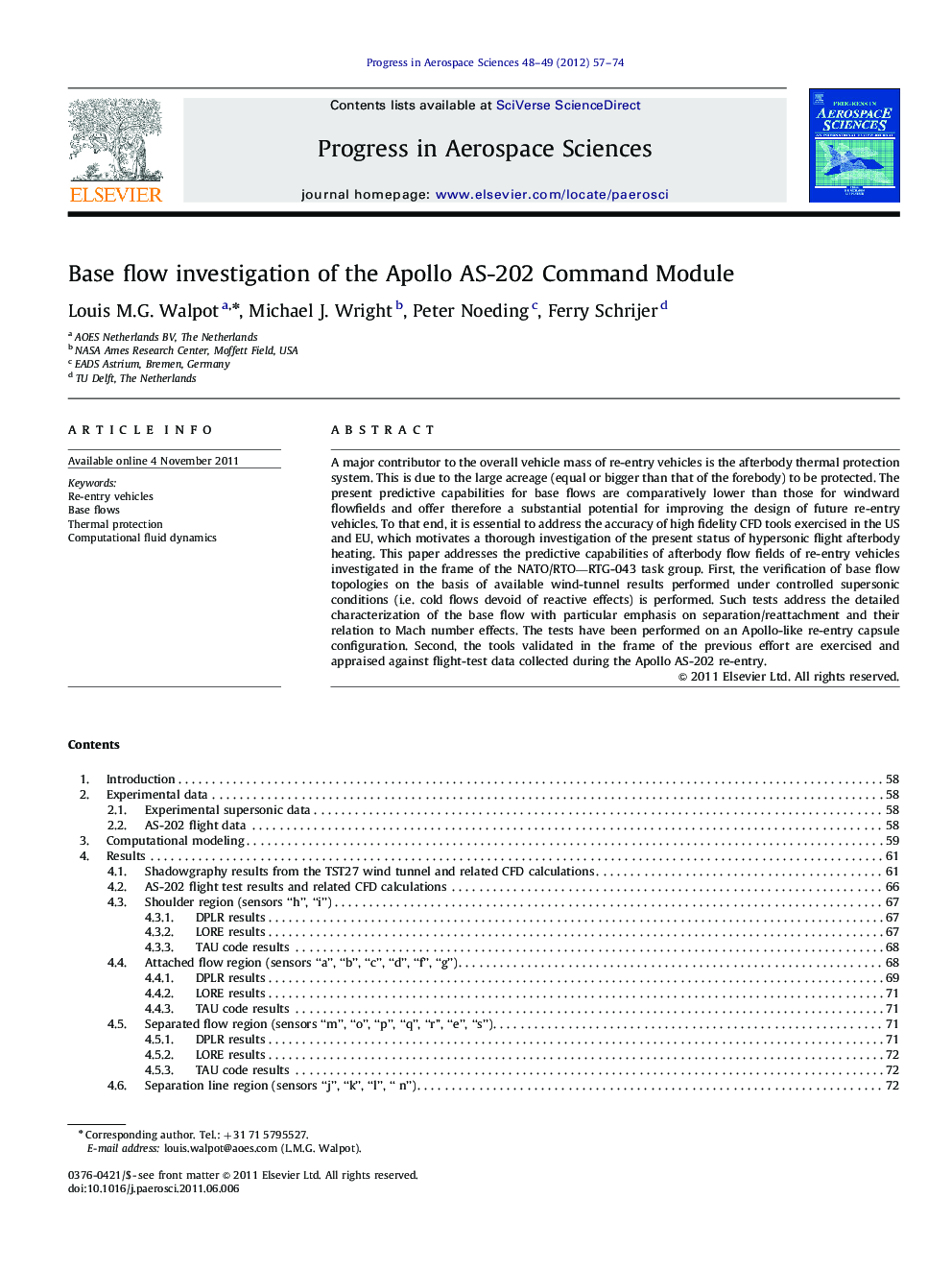| Article ID | Journal | Published Year | Pages | File Type |
|---|---|---|---|---|
| 1719370 | Progress in Aerospace Sciences | 2012 | 18 Pages |
A major contributor to the overall vehicle mass of re-entry vehicles is the afterbody thermal protection system. This is due to the large acreage (equal or bigger than that of the forebody) to be protected. The present predictive capabilities for base flows are comparatively lower than those for windward flowfields and offer therefore a substantial potential for improving the design of future re-entry vehicles. To that end, it is essential to address the accuracy of high fidelity CFD tools exercised in the US and EU, which motivates a thorough investigation of the present status of hypersonic flight afterbody heating. This paper addresses the predictive capabilities of afterbody flow fields of re-entry vehicles investigated in the frame of the NATO/RTO—RTG-043 task group. First, the verification of base flow topologies on the basis of available wind-tunnel results performed under controlled supersonic conditions (i.e. cold flows devoid of reactive effects) is performed. Such tests address the detailed characterization of the base flow with particular emphasis on separation/reattachment and their relation to Mach number effects. The tests have been performed on an Apollo-like re-entry capsule configuration. Second, the tools validated in the frame of the previous effort are exercised and appraised against flight-test data collected during the Apollo AS-202 re-entry.
► Advancement of the understanding of complex base flow phenomena at hypersonic capsules. ► Better kind of the limits in the accuracy of abstract aerothermal heat flux calculation using altered modeling approaches. ► Code-to-code comparison on hypersonic reentry capsules base flows.
